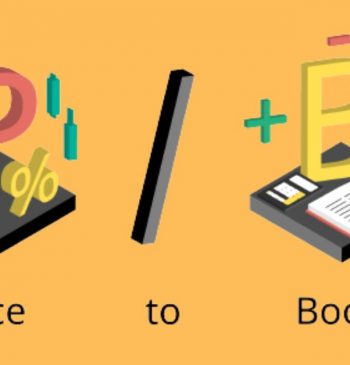10 Sep

As financial regulations change, it’s essential for professionals like you to keep up with key updates in financial reporting. The International Financial Reporting Standards (IFRS) are frequently revised, not only to meet global practices but to improve the accuracy and transparency of financial statements. Each of these updates carries its own financial implications, which can impact a company’s bottom line, key ratios, and how investors view its performance. A change in accounting policies affects your entire financial picture, from revenue recognition to lease management.
In this guide, we’ll explore ten key IFRS changes, explaining how they work and their financial impact. These insights will help you manage changes and make informed decisions for your business.
1. IFRS 16 – Leases
IFRS 16 changed how you account for leases. Previously, under IAS 17, leases could be classified as operating or finance leases, keeping operating leases off the balance sheet. With IFRS 16, all leases (except for short-term and low-value ones) must now be recorded as assets and liabilities.
Financial Implications
You’ll notice higher assets (right-of-use assets) and liabilities (lease obligations) on your balance sheet. This change can affect key financial ratios like debt-to-equity and return on assets, which may concern stakeholders. Lease payments previously recognized as operating expenses will now appear as depreciation and interest, changing your EBITDA and affecting profit measurements, especially for industries with large lease portfolios, like retail or airlines.
2. IFRS 9 – Financial Instruments
IFRS 9 introduced a forward-looking model for credit losses. Instead of waiting for a loss to happen (as under IAS 39), you now need to estimate potential losses upfront using an expected credit loss (ECL) approach.
Financial Implications
You’ll recognize credit losses earlier, leading to potentially higher impairment provisions. This affects your profitability and could hit hard if you manage large loan or receivables portfolios. Banks and financial institutions will see the biggest impact, with higher provisions reducing net income. However, the ECL model also helps smooth out future bad debts, making impairments less volatile.
Financial Implications
You’ll recognize credit losses earlier, leading to potentially higher impairment provisions. This affects your profitability and could hit hard if you manage large loan or receivables portfolios. Banks and financial institutions will see the biggest impact, with higher provisions reducing net income. However, the ECL model also helps smooth out future bad debts, making impairments less volatile.
3. IFRS 15 – Revenue from Contracts with Customers
IFRS 15 replaced multiple standards with a unified five-step model for recognizing revenue. The key idea is that you should recognize revenue when control of the good or service passes to the customer, rather than when risks and rewards shift.
Financial Implications
Revenue recognition might now be faster or slower, depending on how you structure your contracts. For businesses like construction or tech, this could shift the timing of revenue, potentially leading to new tax and financial reporting strategies. You’ll need to carefully assess performance obligations within contracts to ensure accurate revenue reporting.
4. IFRS 17 – Insurance Contracts
IFRS 17 standardizes the measurement and presentation of insurance contracts. It requires you to measure insurance liabilities using current estimates and discount rates, providing more transparency.
Financial Implications
This change hits the insurance sector the hardest. Insurers must remeasure contracts regularly, leading to potential volatility in profits due to changing discount rates and assumptions. Insurers will also need to improve internal systems to handle the increased reporting requirements, which could demand significant upfront costs.
5. IFRS 3 – Business Combinations (Amendment)
The amendment to IFRS 3 clarifies when an acquisition qualifies as a business combination or an asset purchase. A “business” must now include an integrated set of activities and assets capable of generating outputs.
Financial Implications
Classifying an acquisition as a business combination leads to the recognition of goodwill, while an asset purchase does not. Goodwill can impact future impairment testing and profitability. This distinction will affect how you manage M&A activities, as goodwill can inflate the balance sheet and alter earnings in future periods.
6. IAS 1 – Presentation of Financial Statements (Amendment)
IAS 1 now focuses on how you classify liabilities as current or non-current. The classification depends on whether you have the right, at the reporting date, to defer settlement for at least 12 months.
Financial Implications
This change might cause you to reclassify liabilities, which could affect your liquidity ratios. If your debt covenants are linked to these ratios, reclassification could cause breaches, requiring renegotiation with lenders. Early communication with stakeholders will be important to avoid issues.
7. IFRS 2 – Share-Based Payments (Amendment)
The amendment to IFRS 2 clarifies how you account for changes in share-based payment plans. If the fair value of the equity instruments increases after a modification, you’ll need to recognize the difference as an additional expense.
Financial Implications
This amendment can increase compensation expenses, particularly for companies relying on stock options for employee retention. Startups and tech firms, which frequently adjust share-based payments, may face rising expenses and the need for more detailed reporting.
8. IAS 12 – Income Taxes (Amendment)
IAS 12 clarifies how deferred tax assets and liabilities are recognized on unrealized gains or losses. Previously, there was inconsistency in how companies recognized deferred taxes in these cases.
Financial Implications
This amendment forces you to reevaluate your deferred tax accounting. You may need to recognize more deferred tax liabilities, increasing your tax burden on the balance sheet. This change could also affect your tax planning strategies and overall profitability, as you may now need to account for tax impacts that were previously overlooked.
9. IFRS 10 and IAS 28 – Sale or Contribution of Assets Between an Investor and Its Associate or Joint Venture
The amendment clarifies that full gain or loss recognition applies when a sale or contribution involves a business. However, partial recognition applies if the transaction involves only assets.
Financial Implications
This change alters how you recognize profits from asset sales to associates or joint ventures. If classified as a business, you recognize full gains, but if it’s just an asset, you only recognize part of the gain. This could delay profit recognition and impact your earnings forecasts, especially if you engage frequently in such transactions.
10. IAS 37 – Provisions, Contingent Liabilities, and Contingent Assets (Amendment)
IAS 37 clarifies that when assessing whether a contract is onerous, you must include both incremental costs and direct costs related to contract performance.
Financial Implications
You might need to recognize more provisions, as the standard now requires you to consider a broader range of costs. This could reduce your net income if you hold many long-term contracts. The amendment will require tighter cost tracking and contract management to avoid surprises during financial reporting.
Conclusion
Understanding these IFRS changes requires a deep understanding of how they impact your financial reporting. These updates can alter everything from your balance sheet to your income statement, influencing profitability, tax strategies, and financial ratios. Keeping up with these changes ensures compliance, improves financial transparency, and strengthens stakeholder relationships. In order to increase long-term financial health for your company, you should take proactive steps to address these standards.
Marjina Muskaan has over 5+ years of experience writing about finance, accounting, and enterprise topics. She was previously a senior writer at Invyce.com, where she created engaging and informative content that made complex financial concepts easy to understand.
Related Post
Copyright © 2024 – Powered by uConnect



Marjina Muskaan